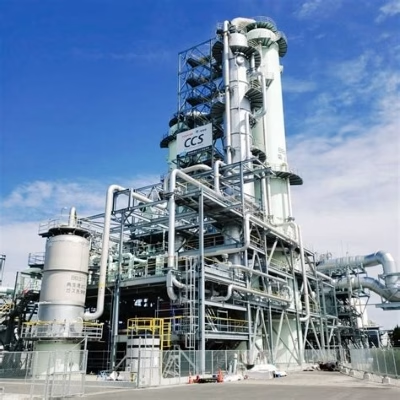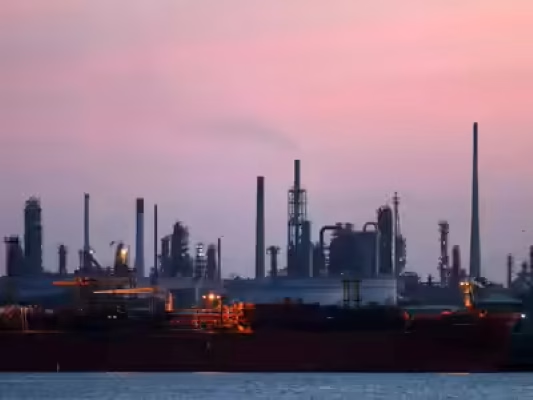Indonesia is advancing plans to convert 19 oil and gas blocks across the archipelago into carbon storage sites under its Carbon Capture and Storage (CCS) program as engagements with multinational energy majors continues.
Speaking at the International and Indonesia Carbon Capture Storage (IICCS) Forum 2025 in Jakarta, Belladona Troxylon Maulianda, Executive Director of the Indonesia Carbon Capture and Storage Centre (ICCSC), said the identified blocks represent early-stage CCS projects spread from Sabang to Merauke. These include both onshore and offshore formations, being evaluated in cooperation with domestic and international companies.
Participating energy majors with stakes in some of the world’s largest oil rigs include ExxonMobil, BP, INPEX, and Repsol, alongside Indonesia’s state-owned Pertamina, which is developing its own CCS programs through foreign partnerships. Notable candidate sites include ExxonMobil’s Asri Basin and Gundih Field in Central Java, BP’s Tangguh Ubadari Block in West Papua, INPEX’s Masela Block in Maluku, and Repsol’s Sakakemang Block in South Sumatra.
According to ICCSC data, Indonesia’s underground carbon storage potential is estimated at around 600 gigatonnes, compared to the country’s annual emissions of roughly 600 million tonnes. This capacity, Maulianda noted, could serve over 200 years of domestic storage needs, while positioning Indonesia as a regional hub for cross-border carbon storage in Asia.
Deputy Speaker of the Indonesian People’s Consultative Assembly (MPR), Eddy Soeparno also emphasized that CCS could pivot Indonesia’s position in the global carbon economy. He pointed to Pertamina’s planned CCS-Petrochemical hub with ExxonMobil, which could attract up to US$10 billion in investment. Soeparno also added that effective policy frameworks, investment transparency, and regulatory clarity would be essential to sustain momentum and ensure credible implementation.

Indonesia’s 19-Block CCS Development Program Factsheet
Lead Institutions
Indonesia Carbon Capture and Storage Centre (ICCSC)
Ministry of Energy and Mineral Resources (ESDM)
Coordinating Ministry for Maritime Affairs and Investment
Domestic Operator
Pertamina, including Pertamina Hulu Energi (PHE), and Pertamina New and Renewable Energy
International Partners
ExxonMobil with Asri Basin and Gundih Field (Central Java)
BP Indonesia with Tangguh Ubadari Block (West Papua)
INPEX with Masela Block (Maluku)
Repsol with Sakakemang Block (South Sumatra)
Program Scope
19 oil and gas blocks designated as potential carbon storage sites
Both onshore and offshore locations spanning western to eastern Indonesia
Estimated Storage Potential
600 gigatonnes of CO2 equivalent to more than 200 years of Indonesia’s current annual emissions
Investment Outlook
Initial CCS-Petrochemical hub between Pertamina and ExxonMobil valued at up to US$10 billion
Additional partnerships expected with Japanese and European investors
Program Objectives
Support Indonesia’s Net Zero 2060 roadmap
Establish Indonesia as a regional CCS hub for Asia
Enable cross-border carbon storage opportunities
Decarbonize domestic oil, gas, and industrial sectors
Timeline of Indonesia’s Carbon Capture and Storage (CCS) Development Initiative
2023: Policy groundwork developed by Indonesia’s Ministry of Energy and Mineral Resources (ESDM).
2024: Technical mapping and feasibility studies done by Indonesia Carbon Capture and Storage Centre (ICCSC) and partner institutions.
2025: Priority sites identified by ICCSC bringing number to 19 oil and gas blocks. International collaboration also begins with majors such as Pertamina, ExxonMobil, BP, INPEX, and Repsol.
Focus now on pre-FEED and pilot planning.
2026 Onwards: Pilot project phase expected to begin with, notably, Gundih Field (Central Java) and Tangguh Ubadari (West Papua), expected to enter pilot injection phases pending final investment decisions (FIDs).
Regional and Market Impact of Push for Oil and Gas Blocks for Carbon Storage by Indonesia
Indonesia’s move to repurpose oil and gas basins for CCS points toward its energy transition and industrial decarbonization goals. The country’s large geological potential, extensive oil and gas infrastructure, and strategic location also give it an advantage in developing regional carbon storage services, particularly for high-emission economies in Asia that have limited suitable geological formations.
If successful, these projects could decarbonize Indonesia’s LNG, refining, and petrochemical sectors, while establishing new revenue streams through carbon-storage partnerships. However, project realization will depend on carbon pricing mechanisms, regulatory finalization, and international investment flows.
The 19 oil-and-gas-block repurposing initiative also marks one of Southeast Asia’s most ambitious CCS undertakings to date, signaling a potential shift from exploration-based hydrocarbon production to storage-based carbon management as part of a positive reception to climate action.

